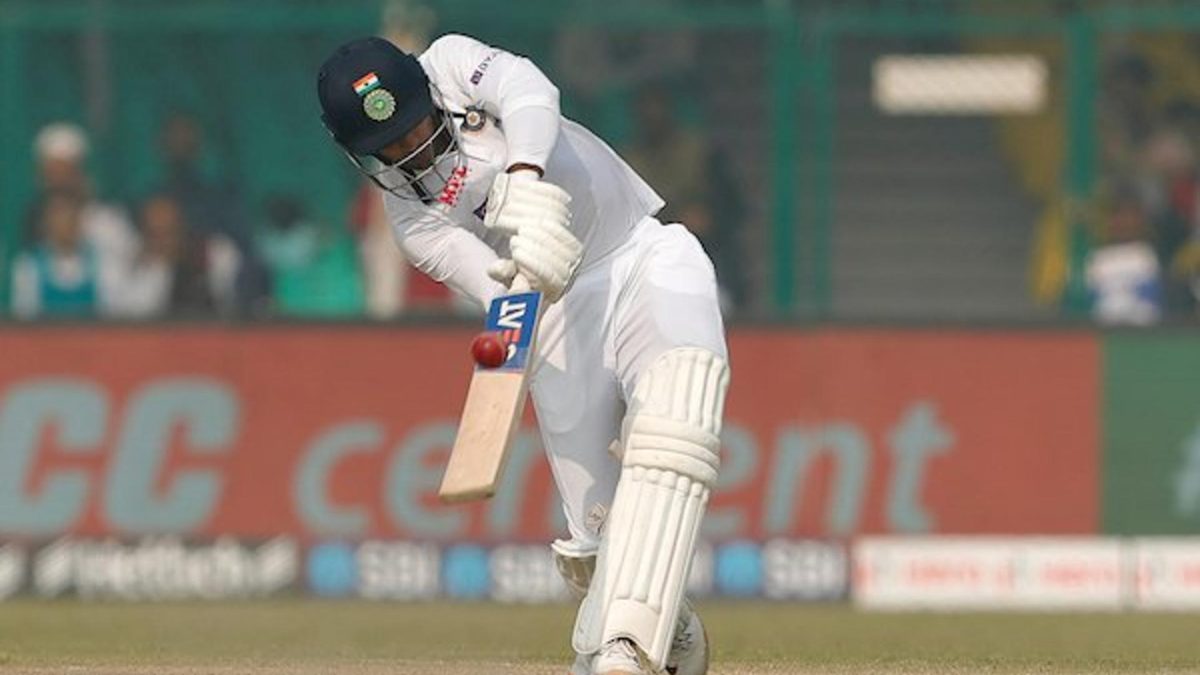
A couple of years ago, on India’s tour to Australia, Mayank Agarwal was thrown into the deep end at the Melbourne Cricket Ground.
At the time, the Indians were struggling for runs at the top of the order and pinned their hopes on a youngster who had set the domestic stage on fire.
Mayank did everything India could’ve asked for. He provided solidity at the top, married it with the right sort of intent and made millions fall in love with his flair. Immensely fruitful home rubbers against Bangladesh and South Africa followed, meaning that Mayank was India’s premier opener when India toured New Zealand in early 2020.
On that tour, though, a few shortcomings against the swinging ball came to light. There were a couple of occasions when Mayank fell over to the off side and was trapped lbw. On other instances, he was guilty of throwing his bat at the ball and getting caught. And, when Mayank returned to the country where he began his international career, things started falling apart.
The shots square of the wicket, which defined his early rise, were being unfurled only intermittently. He was finding new ways to get dismissed. But more importantly, he seemed anything but an opener who could provide solidity at the top. Since then, appearances have been at a premium – partly because of India’s opening riches, but largely because Mayank has, at times, looked out of his depth in the longest format.
From that perspective, the home series against New Zealand was the perfect opportunity to remind the world what he remains capable of. And, of course, show that he still belongs at this level. So far, though, the initial signs are that this rubber will perhaps illustrate the gulf in quality between an in-form Mayank and the current iteration.
The right-handed opener has played a fair bit of international cricket since his debut. Throughout this stint, he has never compromised on flamboyance. In fact, it is this very aspect that endeared him to so many people so quickly. At his best, Mayank has the ability to dominate any bowling attack, irrespective of the conditions and the situation. At his worst, however, he seems a batter who can be dismissed by any international pacer.
A lot of this discrepancy stems from Mayank’s technique. The opener has a tendency to plant the heel of his front foot rather than transferring his weight completely. In the process, he plays a lot of strokes on the move – something that isn’t advisable if the ball is moving.
For example, if the front foot is not planted, the batter can be forced to follow the line of the ball. In both his innings at Kanpur, Mayank perished in that very fashion. He followed the ball with his hands, and with his front foot still in motion. Unsurprisingly, he was caught behind the stumps on both occasions.
This argument of Mayank offering too many catches owing to his method is backed up by numbers. Since his Test debut, Mayank has batted 25 times and has been dismissed bowled or LBW only seven times. On each other occasion, he has been caught – either while wafting at deliveries outside off stump or while pushing at deliveries that could’ve been left alone.
Additionally, this technical flaw could also be detrimental if the ball moves back into the batter. Not because there isn’t a stable base to play strokes from, but because the batter would then have to play around his front pad as well. Basically, there are so many moving parts in such a technique that Mayank needs to be at his absolute best to be successful.
Mayank’s technique is very sustainable against spin bowling. The lack of a planted front foot allows more freedom to change his stroke. Moreover, it enables him to skip down the track and go over the top. He has been dismissed by spinners only five times out of 25 in his Test career. So, he clearly has something going for him.
The right-hander hasn’t become a bad player overnight. He still has the talent and the strokes to dominate any bowling attack. The problem, at least for now, is that he has too many variables attached to his style of batting. When on song, he can tear apart any opposition – Australia, Bangladesh and South Africa would testify. However, the likes of England and New Zealand would also suggest that he can implode just as easily.
Mayank has eight scores above 40 in 25 Test knocks – essentially amounting to a failure 68 per cent of the time. There are two double hundreds and a century included in that tally of eight as well. Somewhere in between, though, is where Mayank’s Test career will actually be defined. He can still be as good as he was touted to be on that tour to Australia in 2018-19.
However, for that to happen, he needs to devise a method that minimizes his weaknesses and maximizes his strengths. Mayank, at this moment, still seems a distance away from stumbling upon a formula.
From a more urgent Indian perspective, the string of low scores at Kanpur reek of a missed opportunity. Not just because Mayank has portrayed deficiencies he would’ve wanted to hide. But also because of the riches existing at the top of the order for India.








